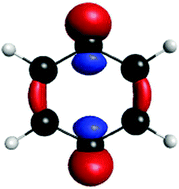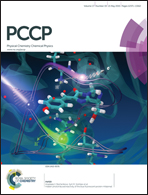Energies and structures in biradical chemistry from the parametric two-electron reduced-density matrix method: applications to the benzene and cyclobutadiene biradicals
Abstract
The treatment of biradical chemistry presents a challenge for electronic structure theory, especially single-reference methods, as it requires the description of varying degrees and kinds of electron correlation. In this work we assess the ability of the parametric two-electron reduced-density matrix (p2-RDM) method to describe biradical chemistry through application to the benzene and cyclobutadiene biradicals. The relative energy of o- and m-benzynes predicted by the p2-RDM method is consistent with Wenthold et al.'s experimental determinations, while the more difficult relative energy prediction of the more multi-referenced p-benzyne is within 1.4 kcal mol−1 of the experimental value [P. G. Wenthold et al., J. Am. Chem. Soc., 1998, 120, 5279], which is significantly better than traditional single-reference methods. We observe that the degree of multireference correlation in the biradicals depends upon the distance between their radical centers, with the largest radical separation displaying the largest degree of multireference correlation. In addition to relative and absolute electronic energies, we report molecular geometries, natural orbitals, and natural-orbital occupations for the benzene and cyclobutadiene biradicals.


 Please wait while we load your content...
Please wait while we load your content...